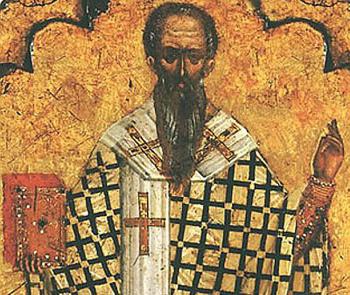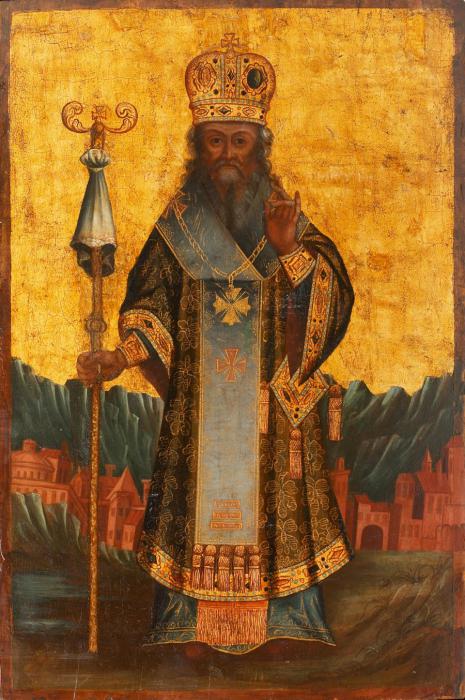The Acts of St. Luke tells us that many of the hearers believed in Jesus Christ at the same time that the Apostle Paul announced his sermon . And one of them was Dionysius the Areopagite. But why did the narrator highlight him so much?
Dionysius the Areopagite before the adoption of Christianity
The legend says that this man was the first sage and dignitary of Greece. He was named Areopagite because he presided over the Athens Supreme Court - the Areopagus. Since the time of the founder of this court, Solon was transferred there for the final decision of the most complex cases from all the republics and policies of Greece, as well as from many Roman cities and regions. Dionysius the Areopagite is said to be the most eloquent of all speakers, the most visionary of all astronomers, the most thoughtful of philosophers, the most just and truthful of all judges. This was a man endowed with all virtues. The conversion of such a famous person to Christianity was a very important acquisition for the nascent Church.
After the adoption of Christianity
Under the leadership of the Primate of the Church of Athens, Jerofei, Dionysius studied Christianity for a short time and showed such impressive successes that the Apostle Paul ordained him bishop instead of Jerofei himself, who left Athens in order to carry the word of Christ to other countries. Naturally, the Church of Athens, under the leadership of the new bishop, began to develop rapidly. However, literally in the fifty-eighth year from the birth of Christ, Dionysius the Areopagite went to the city of Jerusalem, where the Apostles and their companions from all other countries gathered at the suggestion of the Holy Spirit. Therefore, he quickly had to leave the bishopric in Athens.
Missionary activity
In Jerusalem, the inspired speeches of the Holy Apostles, the vision of the Assumption of the Virgin, the sight of Golgotha and other shrines made Dionysius experience such strong inner experiences that he decided to leave the fatherland and his relatives forever and go to preach the Gospel to pagan countries. He returned to Athens only to take with him a few clerics. Further, his path lay in western Europe, where idolatry flourished, where he glorified Jesus Christ with words, signs and wonders. He illuminated the light of the Gospel to Italy, Spain, Germany and Gaul, until he died in Paris, one hundred and tenth year after the birth of Christ. On October 3, the Church celebrates the memory of such a famous figure of early Christianity as St. Dionysius the Areopagite.
Hoax or not?
At the end of the fifth century in Syria, an unknown Christian writer published a number of treatises on theology in Greek. These works were based on biblical tradition and on the philosophy of Neoplatonism. Interestingly, they were released under the name of the author of Dionysius the Areopagite. Is this a hoax? It’s hard to say for sure. However, many researchers are inclined to believe that this is still a hoax, and prefer to name the author of these treatises by the name "Pseudo-Dionysius Areopagite".
Works of Areopagite
The body of essays includes five books. The treatise, allegedly written by Dionysius the Areopagite, “On Divine Names,” contains arguments about the definitions and names that are given in the Bible by addressing God (“Good”, “One”, “Jehovah”, “Ancient of Days”, “King of Kings” "). The author tries to explain from a theological point of view the sacred meaning of such names. Another treatise, entitled “On Mysterious Theology,” speaks of the superiority of God over all that a person can express in words. Therefore, God is higher than being and unity, which is shown by Dionysius the Areopagite in his reasoning. One of the most interesting theological treatises both for its time and for the moment is On Divine Names and Mystical Theology. Dionysius the Areopagite is an author whose books can crown the collection of anyone interested in biblical studies and theology. There is also a book “On the Church Hierarchy”, which describes the daily life of the church - the ranks of priests (deacon, priestly and episcopal), sacraments (baptism, anointing, and the Eucharist), funeral and wedding ceremonies, conditions of penitents and catechumens. But the most famous treatise, which was written by Dionysius the Areopagite - “On the heavenly hierarchy”. It is worth dwelling in more detail.

The book "On the heavenly hierarchy"
This composition takes a very interesting place. In this work, some testimonies from the Gospel and the Apocalypse of John are found. This suggests that this work was written no earlier than the beginning of the first century after the Nativity of Christ, not in Athens, but already in Western countries. The book itself is divided into fifteen chapters. First of all, before telling about secrets of heaven, Dionysius the Areopagite first prays to the Lord with a request to let him understand the symbols under which angels and their ranks appear in the Holy Scripture. Then, the necessity of the symbols themselves in explaining both church rites and angelic ranks is explained, since our mind is not able to penetrate these secrets in any other way. But these symbols cannot be taken literally, since the divine world is disembodied. By the way, Dionysius the Areopagite says the same thing about divine names - these are all abstract symbolic representations of this or that manifestation of the Lord.

The concept of hierarchy. Dionysius Areopagite
“On the heavenly hierarchy” is a work that is actually the founder of the Christian science of angelology, which later migrated to occultism and “white magic”. This direction is studying angels, their functions, ranks and interaction with them. After the above examples and explanations, the treatise gives the concept of hierarchy as a sacred relationship between different ranks, which has the goal of potentially likening the beginning (meaning the Creator) through enlightenment, purification and improvement of oneself and one's subordinates. Accordingly, the entire hierarchy of angels (messengers) is a pyramid on top of which the Lord himself is located.
Angelic ranks
Actually, the name "angel" refers in the writings of such an author as Dionysius the Areopagite only to the lower ranks of heaven, however, it can still be correlated to some extent with the higher ones, since they have all the powers of the lower ones. The holy hierarchy is divided into three degrees. In the first - Cherubim, Seraphim and Thrones. In the second - Dominance, Power and Power. In the third - the Archangels, Angels and the Beginning. There are nine ranks in total. Features of the first (highest) degree are interpreted on the basis of their names. Seraphim - flaming, Cherubim - wise, Thrones - are located directly at the throne of the Lord (as stated below, receiving from him purity and perfection). Authorities, Powers and Dominions (the following ranks) are also revealed thanks to their names. It is said that they are improved and enlightened through insights sent from higher ranks, and also pass them on to lower ones. Divine providence, passing from one messenger to another, weakens over time. Beginnings, Angels and Archangels, however, rule over human institutions and patronize people. Then, in his work, Saint Dionysius the Areopagite describes and explains the symbols that are used in the Holy Scriptures to describe the kingdom of heaven.